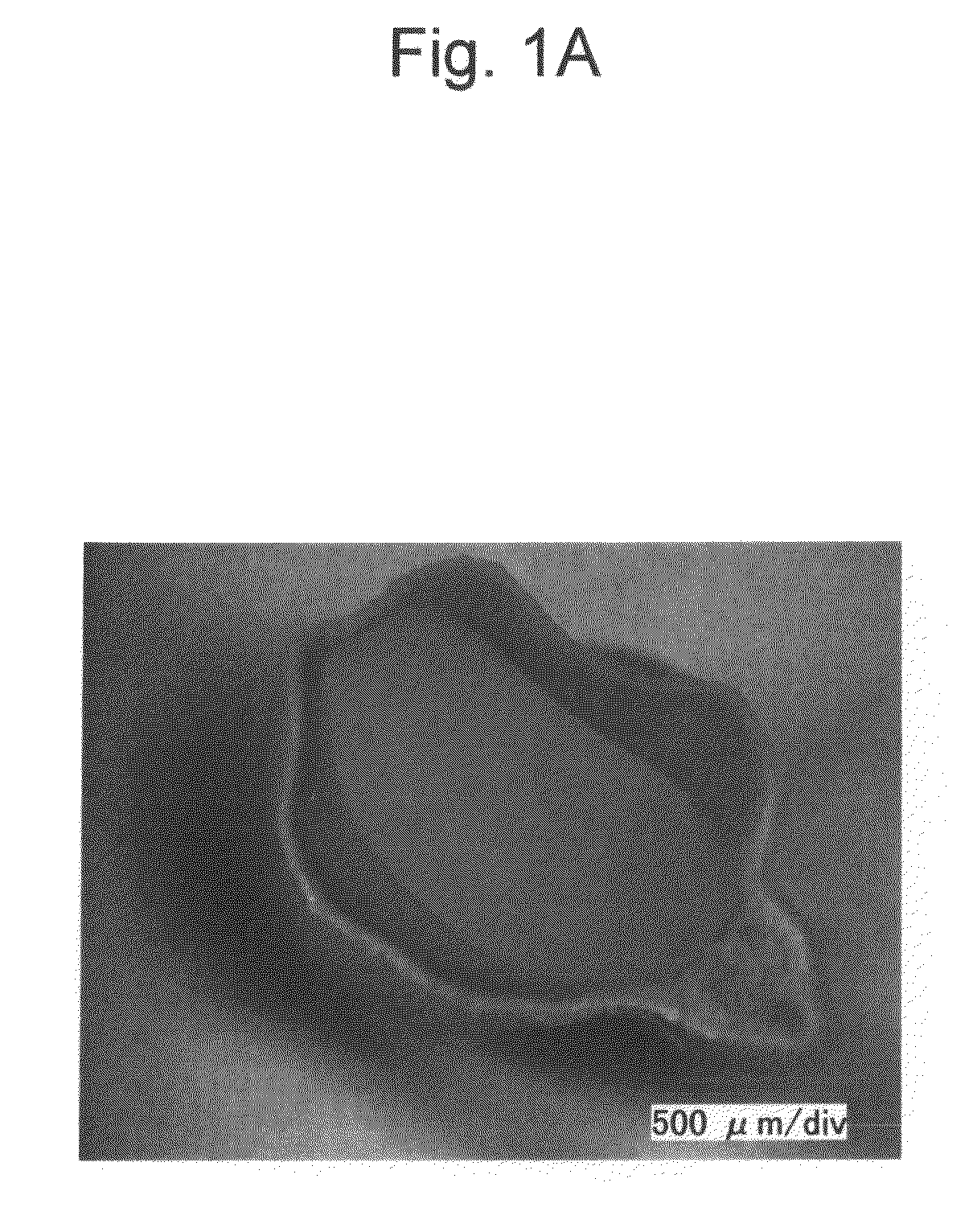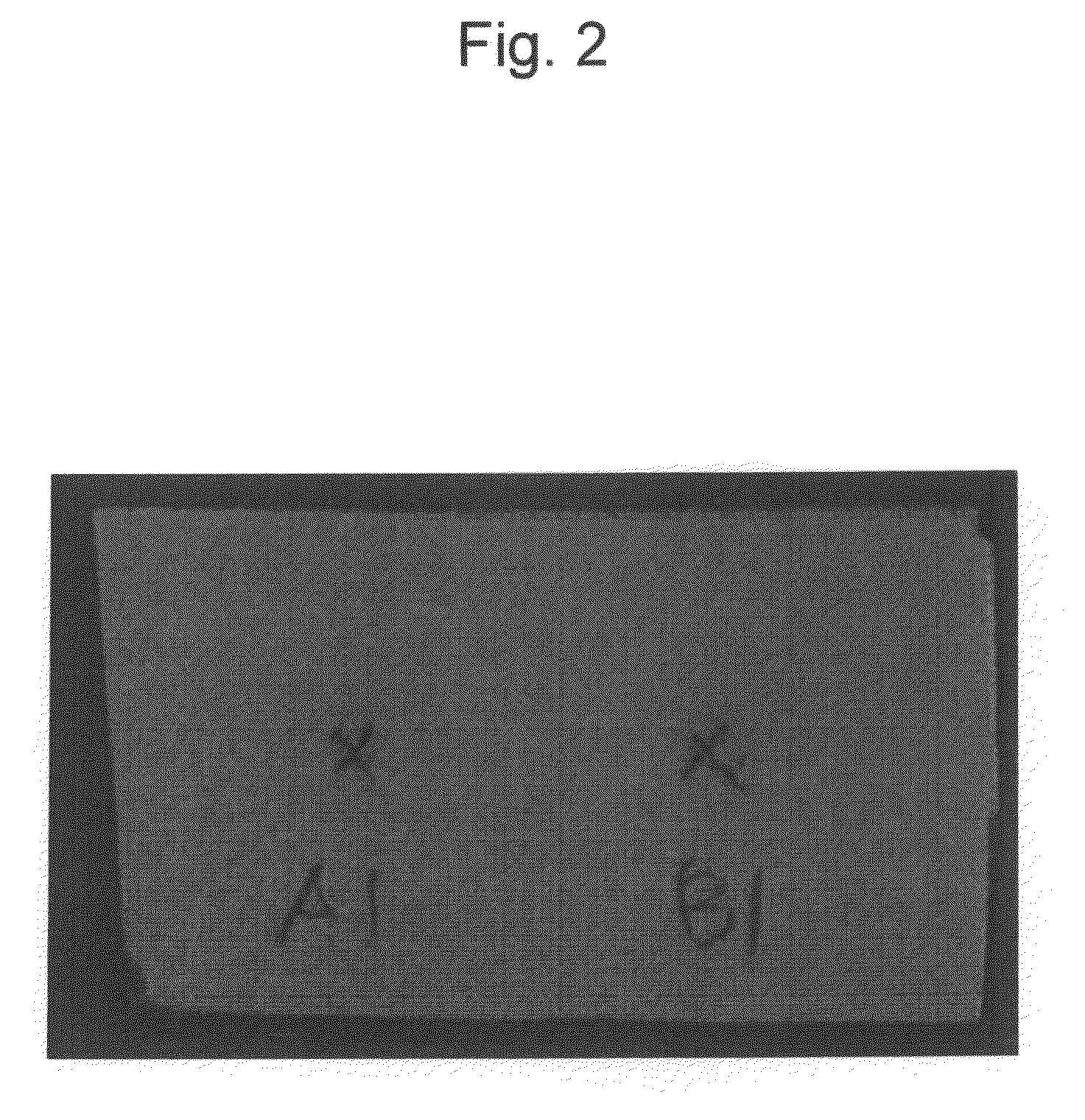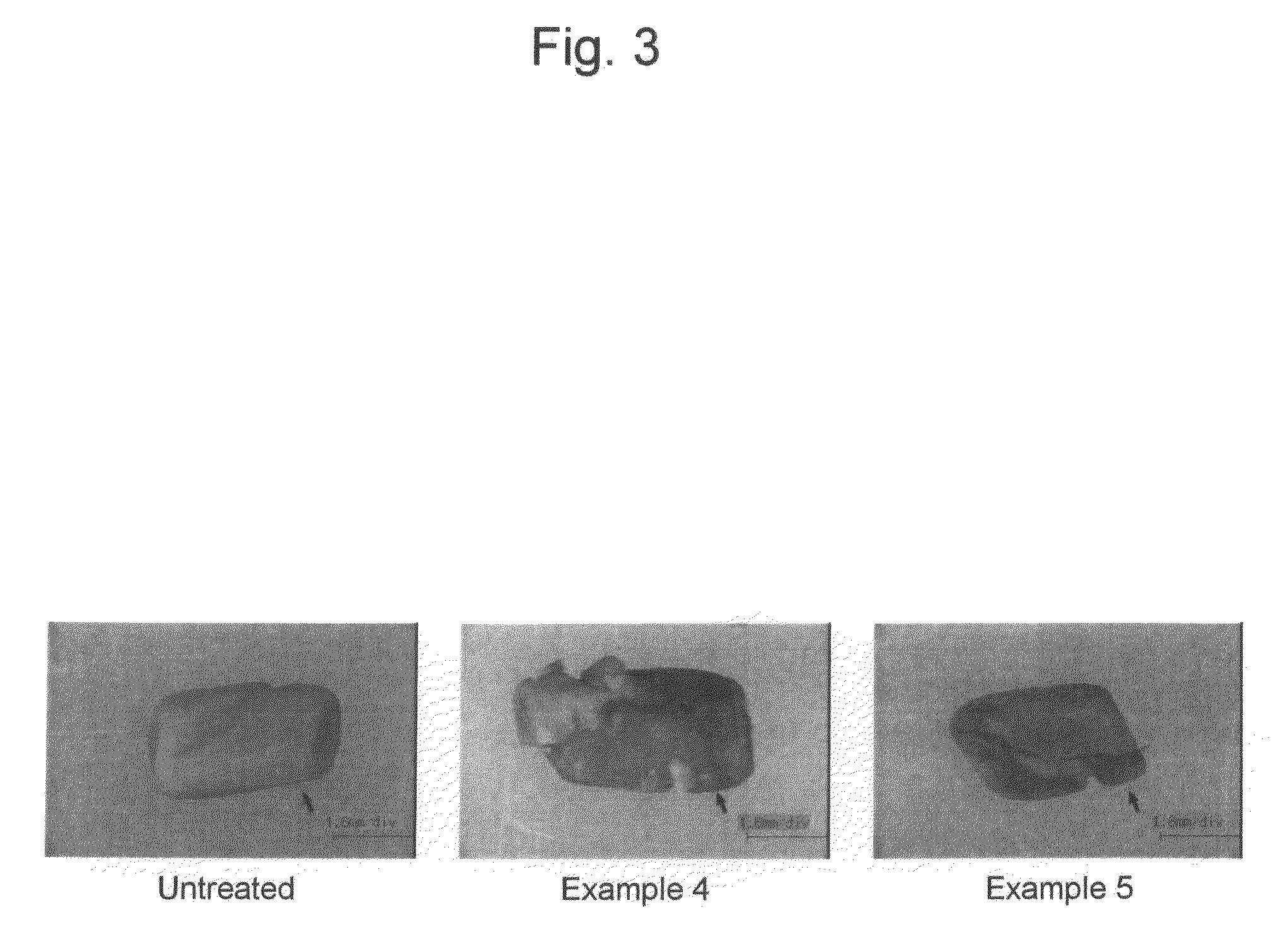Fenugreek seed having reduced bitter taste and method for producing the same
a technology of fenugreek seeds and bitter taste, which is applied in the field of fenugreek seeds having reduced bitter taste, can solve the problems of loss of non-bitter components, the inability to understand whether or not the bitter taste of fenugreek seeds can be removed, etc., and achieve the effect of poor appearan
- Summary
- Abstract
- Description
- Claims
- Application Information
AI Technical Summary
Benefits of technology
Problems solved by technology
Method used
Image
Examples
example 1
Removal of Bitter Taste from Seeds by Heating and Determination of 4-OH Isoleucine Content
(Production of Seeds Having Reduced Bitter Taste)
[0050]Water (120 g) was boiled in a pan and fenugreek seeds (produced in India) (20 g) were added thereto, followed by heating in boiling water for 5 minutes. Then, the amount of water in the pan was finely adjusted so as to obtain a heated mixture in a weight of 69 g. After the addition of water, SPEZYME CP (Genencor Kyowa) (1.9 ml) was added to the mixture. After the addition of SPEZYME CP, incubation was carried out in a thermostatic water bath at 35° C. for 3 hours. During incubation, the obtained product in the pan was agitated with a spatula at hourly intervals. After incubation, the seeds removed from the immersion solution were heated in an autoclave at 90° C. for 15 minutes for deactivation of SPEZYME CP and then cooled, followed by hot-air drying at 60° C. for 2.5 hours.
(The Degree of Water Absorption of Seeds)
[0051]In the above operati...
example 2
Removal of Bitter Taste from Seeds
(Production of Seeds Having Reduced Bitter Taste)
[0055]Two samples were prepared by adding seeds (20 g) to tap water (58 ml). SPEZYME CP (1.9 ml) was added to one of the samples.
[0056]Each sample was agitated with a spatula and immersed in a thermostatic bath at 25° C. 47 hours after immersion, the seeds absorbed 80% of water added thereto.
(Sensory Evaluation of Bitter Taste)
[0057]As a control sample, the immersed seeds in a similar manner without the addition of an enzyme were used. The panelists evaluated the bitter taste of each sample by tasting three immersed grains via their mouths. Among ten panelists, five were instructed to first examine the control sample and the other five were instructed to first examine the enzyme-treated sample in consideration of the order of effects. The panelists evaluated the bitterness intensity of the treated sample compared with the bitter taste of the control sample via a pair test. Regarding evaluation criteri...
example 3
Confirmation of Saponin Elution Upon Immersion
[0058]Two samples of fenugreek seeds (20 g each) were prepared. One of the samples was designated as an enzyme-treated sample, to which distilled water (4.1 ml) and an enzyme (SPEZYME CP: 1.9 ml) were added in such order, followed by mixing. The other sample was designated as a non-enzyme-treated sample, to which distilled water (6 ml) alone was added. Thereafter, each sample was allowed to stand at 35° C. 45 minutes thereafter, sampling from each sample was carried out. Then, the degree of saponin elution was confirmed by sensory evaluation and TLC. Herein, confirmation by TLC was carried out by spotting a solution containing furostanol saponin (1 μl) on a TLC plate (Silica gel 60F245, Merck 1.05715), followed by staining with an Ehrlich reagent. The Ehrlich reagent used was prepared by adding ethanol (80 ml) to 12 N hydrochloric acid (20 ml) and further adding dimethylaminobenzaldehyde (2 g) thereto. Furostanol saponin was stained red ...
PUM
 Login to View More
Login to View More Abstract
Description
Claims
Application Information
 Login to View More
Login to View More - R&D
- Intellectual Property
- Life Sciences
- Materials
- Tech Scout
- Unparalleled Data Quality
- Higher Quality Content
- 60% Fewer Hallucinations
Browse by: Latest US Patents, China's latest patents, Technical Efficacy Thesaurus, Application Domain, Technology Topic, Popular Technical Reports.
© 2025 PatSnap. All rights reserved.Legal|Privacy policy|Modern Slavery Act Transparency Statement|Sitemap|About US| Contact US: help@patsnap.com



